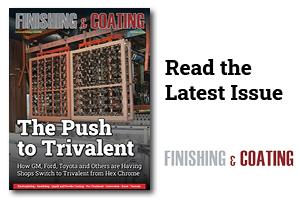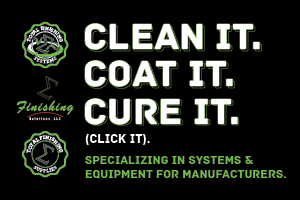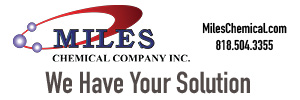For over eight years, Tower Extrusions’ Roger Ricketts wasn’t sure if he even had a solvable problem with the anodizing line.
At the massive Olney, Texas, manufacturing plant, Tower’s anodizing team was undecided about whether the high ammonia levels were something the company would just have to live with or if they could be solved.
The line was emitting high ammonia levels into the facility's wastewater treatment system, which was having difficulty reducing the numbers before they went to the city’s treatment plant, which happened to be adjacent to the Tower Extrusions facility.
Tower Extrusions’ supplier at the time told him there wasn’t much they could do to reduce the amount of ammonia or treat it properly unless they purchased a scrubber. That left Tower Extrusions waiting for city officials to knock at the door about unacceptable levels.
A ‘Fight Every Single Day’ to be Compliant
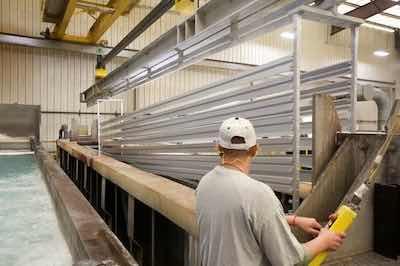 Tower Extrusions is one of the largest extruders in the world with over 1 million square feet of manufacturing space spread between five locations.“We were compliant, but it was it was a fight every single day to make sure we stayed that way,” says Ricketts, the Anodizing Plant Manager at Tower Extrusions, one of the largest extruders in the world with over 1 million square feet of manufacturing space spread between five locations, including one in Puerto Rico.
Tower Extrusions is one of the largest extruders in the world with over 1 million square feet of manufacturing space spread between five locations.“We were compliant, but it was it was a fight every single day to make sure we stayed that way,” says Ricketts, the Anodizing Plant Manager at Tower Extrusions, one of the largest extruders in the world with over 1 million square feet of manufacturing space spread between five locations, including one in Puerto Rico.
The municipality’s plant is less than 20 yards from the anodizing facility in Olney, which magnifies the problem by emitting higher-than-normal ammonia levels caused by the acid etching of the aluminum before it is anodized.
With a supplier unable to assist with the issue and levels barely staying under the compliance marks, Nathan Manninger, the Anodizing Manager, kept looking for solutions but was unsure if one was available.
“It was looking bad for about eight years or so,” says Ricketts, whose one line has 28 tanks and can handle large parts for anodizing.
However, a chance meeting at the Aluminum Anodizing Conference about two years ago with Emily Miller, a Technical Sales Manager with Chemetall, the surface treatment business unit of BASF’s Coatings division, gave Manninger hope that their problem could be solved. It might help them maintain their reputation as good corporate citizens in Olney, a town of about 3,000 people 130 miles west of Dallas.
Exploring the Chemicals in the Production Process
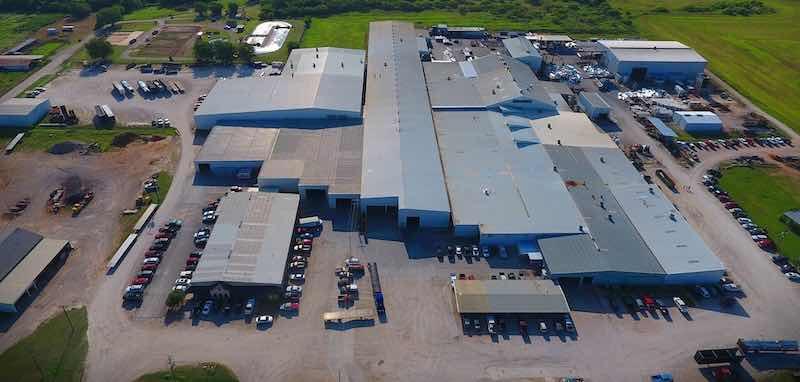 Tower Extrusions plant in Olney, which is less than 20 yards from the municipality’s wastewater plant.Miller says the project called for exploring the chemicals Tower Extrusions was using to run its lines and examine its wastewater treatment chemicals.
Tower Extrusions plant in Olney, which is less than 20 yards from the municipality’s wastewater plant.Miller says the project called for exploring the chemicals Tower Extrusions was using to run its lines and examine its wastewater treatment chemicals.
“A part of it was simply procedural,” Miller says. “Perhaps there was a change in chemistry needed, but where? And part of it was just exploring how they ran their lines and what they used.”
Ricketts and Manninger were all in favor of making whatever changes were needed to reduce the ammonia levels. Still, they also did not want to alter the quality they were producing on the anodizing line. Any change to how the parts would be finished could not deviate from the standards that Tower Extrusion had set for itself or what its customers had come to expect.
 Emily Miller“We wanted to dial it into where our customers didn't notice a difference in what the finished product looked like,” Manninger says. “It was important for Emily and her team to match the reference sample we gave them to use with their chemistry and help us.”
Emily Miller“We wanted to dial it into where our customers didn't notice a difference in what the finished product looked like,” Manninger says. “It was important for Emily and her team to match the reference sample we gave them to use with their chemistry and help us.”
Rue Rogers, Regional Sales Manager for Tower Extrusions, says it was paramount for the quality to stay the same or improve in solving the wastewater issue. The company is coming up on its 48th anniversary, and it was imperative to maintain a high level of finished work.
“We get into a little bit of everything and try to be a turnkey provider for aluminum extrusions,” Rogers says. “We cast our billets, take all of our internal scraps, and buy pure P1020 from different parts of the world to melt it down. We extrude many different profiles, from the bleacher industry to windows, doors, and heat sinks. It’s anything and everything with aluminum.”
144,000 Square Feet Fabrication Facility with 120 Employees
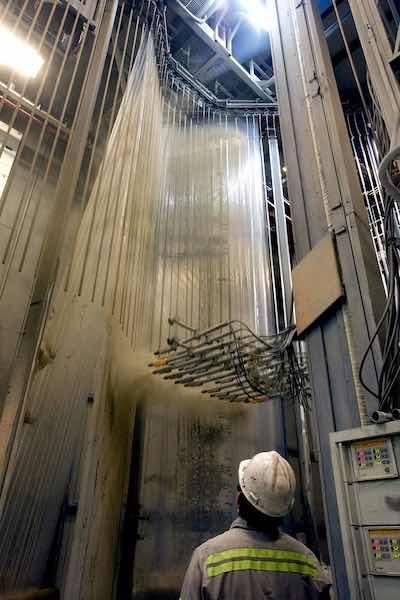 Tower Extrusions also utilzes powder coating at their facilities.Tower Extrusions also offers liquid and powder paint in-house in addition to its 144,000-square-foot fabrication facility, which has about 120 employees. Rogers says they perform CNC machining, punching and press breaking, welding and bending, and some assembly.
Tower Extrusions also utilzes powder coating at their facilities.Tower Extrusions also offers liquid and powder paint in-house in addition to its 144,000-square-foot fabrication facility, which has about 120 employees. Rogers says they perform CNC machining, punching and press breaking, welding and bending, and some assembly.
“At the end of the day, we want to be that company that — when someone walks in the door, and they've got an idea, and they've got a product — not only can we control our supply chain through the casting and control our billet, the aluminum, and the alloy,” he says. “But then we can extrude it with a lot of diversity, fabricate it and finish it.”
However, solving the high ammonia levels was first on their agenda, and Tower Extrusions began working with Chemetall to find a solution that would also give them repeatable quality.
Glenn Triplett, Chemetall North American Regional Marketing Manager for Automotive Components and Architectural Aluminum, says his company's involvement in the project was perfect timing since it had just entered the NA architectural aluminum anodizing finishing market.
Luckily, they had a product they believed could solve the issue, Gardo Etch 8315/8319 acid etch.
“We had the meeting originally just thinking we were there to learn more about each other and explore areas where we might be able to help Tower, and that's really when we came across the issue they were having with the ammonia,” he says. “That's where our product shines since it's a two-part product that allows the user to adjust the fluoride level to meet various challenges on the line somebody to dabble with different levels of fluoride.”
 Glenn TriplettGardo Etch 8315 benefits the anodizer by providing the option of to lower fluoride, which results in reduced ammonia and fluoride in their drag out and wastewater. The Chemetall team began a small tank trial to prove it out on Towers’ parts, and that is when they began to see results.
Glenn TriplettGardo Etch 8315 benefits the anodizer by providing the option of to lower fluoride, which results in reduced ammonia and fluoride in their drag out and wastewater. The Chemetall team began a small tank trial to prove it out on Towers’ parts, and that is when they began to see results.
The product is a two-component acid etch that creates a matte, fine-grained, uniform surface finish on aluminum before anodizing. Gardo Etch 8315/8319 conceals surface die lines and minor scratches without a high aluminum removal rate. Compared to alkaline-type etch products, it also lowers temperature, reduces time, and reduces sludge generation.
Not Trying to Reinvent the Wheel
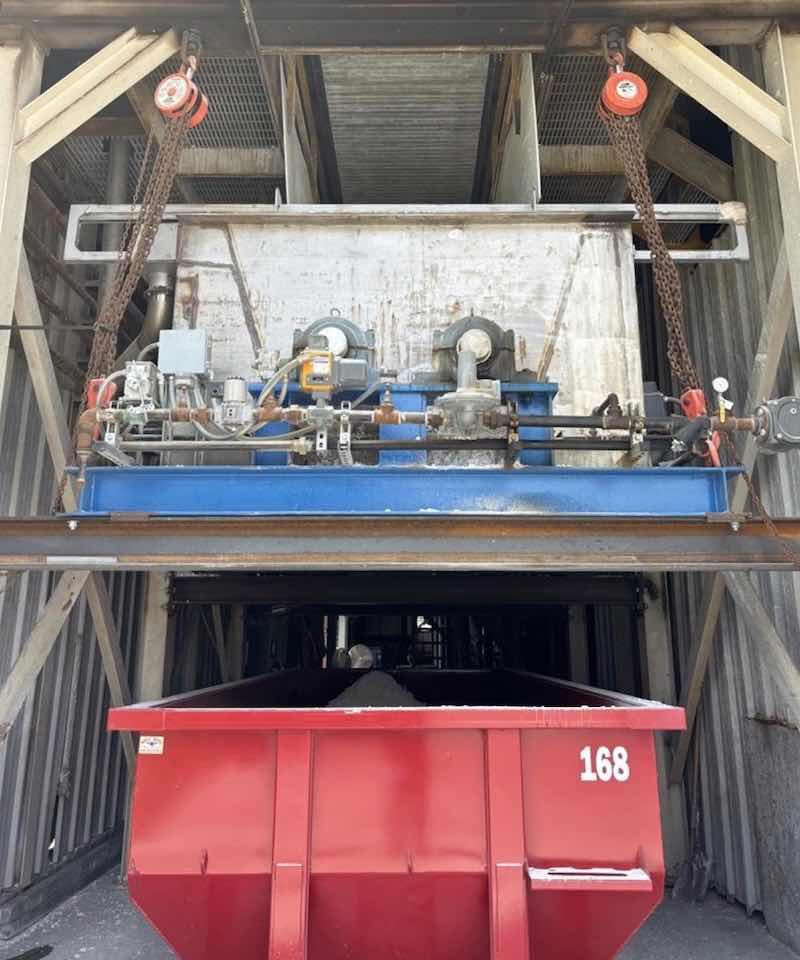 This is the improved and dried etch sludge that comes out of the newly installed sludge dryer. Much more fine, less heavy, drier, easier to haul away.
This is the improved and dried etch sludge that comes out of the newly installed sludge dryer. Much more fine, less heavy, drier, easier to haul away.
Mike McGinty, a Key Industry Sales Manager in Aluminum Finishing for Chemetall, says that when they began testing Tower Extrusions’ parts, the goal was not to reconfigure how the manufacturer finished the parts but to solve the ammonia issue.
“The goal was not to reinvent the wheel necessarily, but to approach this very static process of acid etch differently and in a different direction,” he says. “We split the product, and it started by allowing us to run at lower concentrations and then address that first problem. And kind of a happy accident, we found all these additional benefits with it.”
When the Chemetall and Tower Extrusion team saw that the process was lowering ammonia levels, they also saw that it was lowering chemistry consumption usage and reducing costs.
“Acid etch is such a standard process now in the finishing industry; it hasn't been looked at this deep for a long time,” McGinty says.
Manninger says that Tower Extrusions looked at the problem of high ammonia levels as primarily a wastewater treatment problem, which clouded their focus on taking a step back and examining their overall finishing operations.
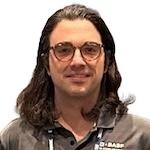 Michael McGinty“We thought that maybe we could try to address it before it gets to the wastewater treatment part and see if we can't help ourselves on the front end instead of being reactive, and let's try to be a little proactive,” he says. “When Emily and her team got together and found some chemistry that matched the reference sample we sent, they all came in, and we just played a mad scientist.”
Michael McGinty“We thought that maybe we could try to address it before it gets to the wastewater treatment part and see if we can't help ourselves on the front end instead of being reactive, and let's try to be a little proactive,” he says. “When Emily and her team got together and found some chemistry that matched the reference sample we sent, they all came in, and we just played a mad scientist.”
After the trial baths were run with parts that satisfied them, Tower Extrusions switched over the chemistry in the bigger baths.
“It took a little bit of dialing in to get exactly where we wanted,” Manninger says. “But we played with the chemistry, fluoride, and ammonia levels and settled into a pretty good thing here. It's made it a lot easier for the wastewater treatment; ammonia is still in the bath, but we worked together to cut that down drastically. And every little bit helps when it comes to wastewater.”
Quality Remains Consistent After Change
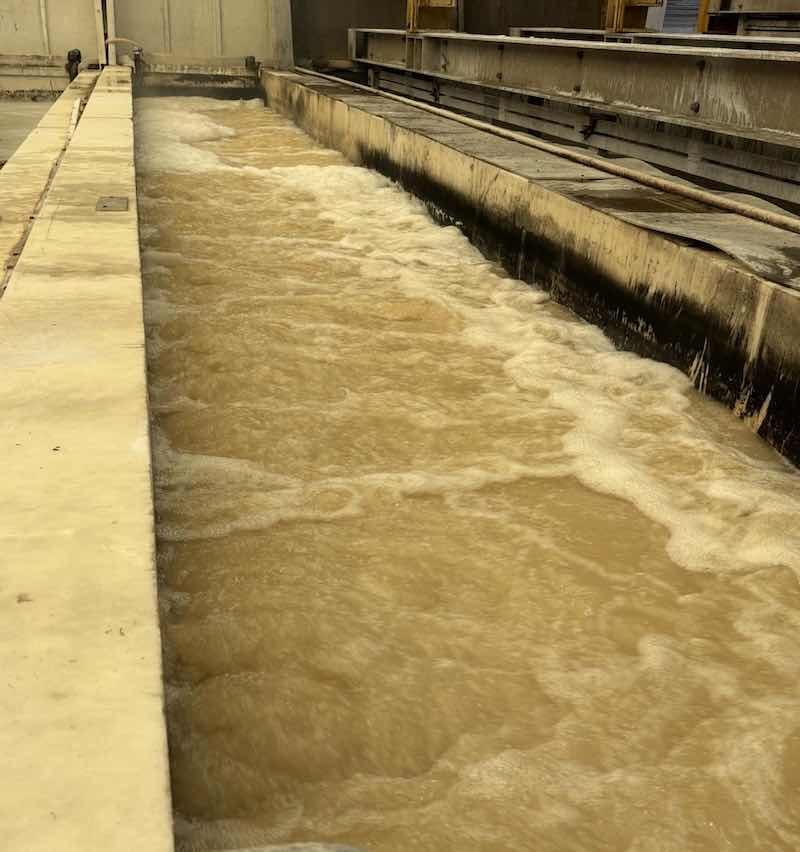 The decorative acid etch tank at Tower extrusions.More importantly, Manninger says the quality has been consistent throughout using the new chemistry.
The decorative acid etch tank at Tower extrusions.More importantly, Manninger says the quality has been consistent throughout using the new chemistry.
“We have not had an issue with customers noticing a difference,” he says. “So it's been a win for us and Chemetall.”
It’s also been a major win for Rogers, who not only serves as regional sales manager at Tower Extrusions but is also the mayor of Olney. Talk about wanting to stay a great corporate citizen, and Rogers had to straddle both sides of the fence.
He says there were times when he was caught between a rock and a hard place. His employer worked to stay under the required wastewater numbers, and he also needed to be the top elected official in the community.
“There were times when I had to put on my city hat and look at things,” Rogers says. “The wastewater guys always had a good relationship with Nathan and Roger, but sometimes they're calling me about it, so we had a few ‘all hands on deck meetings’ where we're working to solve the problem.”
Ricketts and Manninger regret not acting sooner when their previous supplier could not answer the ammonia problems.
“We begged them for eight years to, ‘Is there something you can do to help us out here?’ Manninger says. “We kept getting ‘Well, we're working on it.’ When I first started talking to Chemetall, I said, ‘We can talk about anything but the acid etch, as I probably won't switch that.’ And here we are, and it's the first thing we switched.”
Miller recalls that conversation well.
“At one point, they said to us, ‘You're never going to touch our acid etch, so don't even think about it and don't talk to us about it because you're not changing it,’” she says. “But we didn't go in there thinking acid etch; we're going there with cleaners and traditional treatments.”
Saving 53% on Sludge Hauling Costs and a 75% Reduction
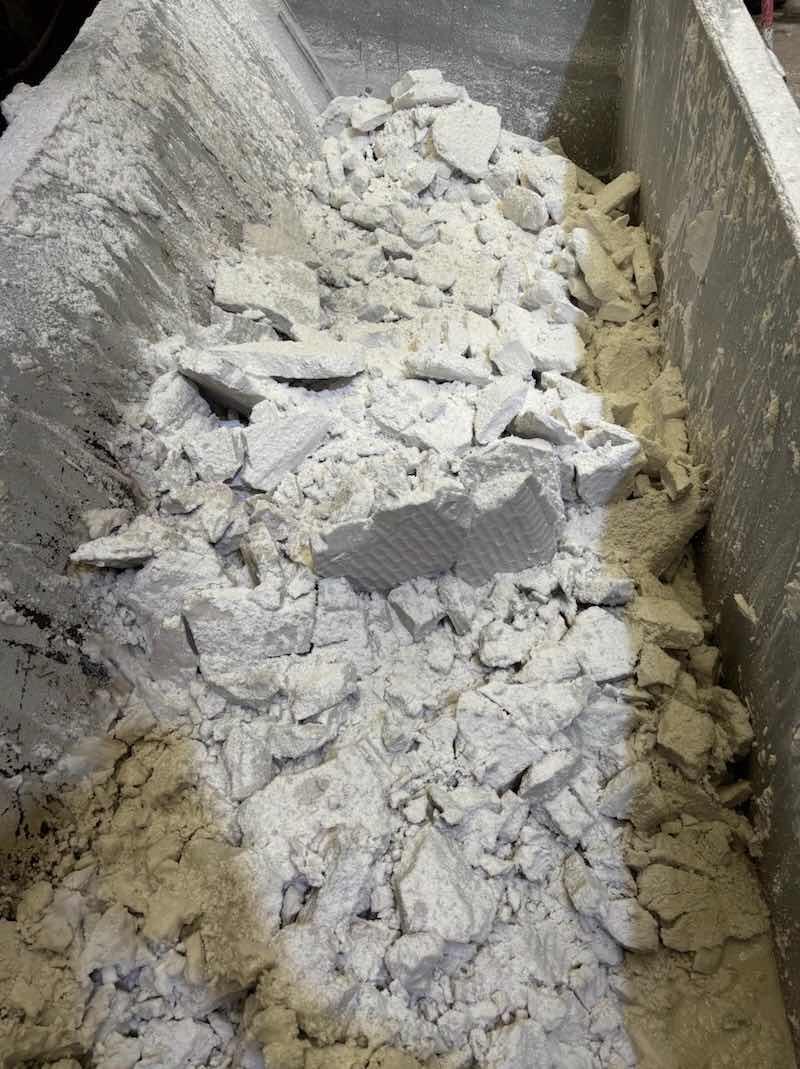 The sludge drier deposits the fine powder below for waste. BASF/Chemetall has helped Tower Extrusions reduce their waste by 75%.In addition to solving the ammonia issues, Tower Extrusions purchased a sludge drier for their facility, a piece of technology and investment that has driven down their haul-away costs by more than 53%, coming from a 48% reduction in total sludge weight hauled, which was supported by a 75% reduction of the sludge they produce in the acid etch tank.
The sludge drier deposits the fine powder below for waste. BASF/Chemetall has helped Tower Extrusions reduce their waste by 75%.In addition to solving the ammonia issues, Tower Extrusions purchased a sludge drier for their facility, a piece of technology and investment that has driven down their haul-away costs by more than 53%, coming from a 48% reduction in total sludge weight hauled, which was supported by a 75% reduction of the sludge they produce in the acid etch tank.
Manninger says it has reduced its landfill waste by more than 161 tons this year, a huge reduction from past years.
“That's a project that we looked at and studied for over a year,” he says. “We were spending a lot of money with the waste haul off, and our impact on the environment and the landfwill was significant, too.”
Moreover, Tower Extrusions customers were asking them sustainability questions, and that is when they knew they needed to seek alternatives to simply hauling tons of waste off to the landfill.
Manninger and another company engineer flew to Salt Lake City to see a machine operate to ensure it worked and would fit into the Tower Extrusions production facility.
“We were blown away by the results they were getting,” he says. “We had the supplier build a massive one because our filter presses are quite large with the 40-foot tanks we have here. It took some time, but we installed it last December, and it's quite dramatic in terms of the cost and the footprint we're leaving.”
The Freedom to Solve the Problems
Ricketts says that out of all the experience with the wastewater and sludge issues, he is thankful that the management at Tower Extrusions allowed them to solve these issues without too many bureaucratic hurdles they needed to leap over.
“Without Tower Extrusions being who they are, I don’t think we would have arrived at these solutions,” he says. “They allowed us the freedom and the opportunity to explore this on our own, and the way Tower is formed and run, we typically would not have been as quick as we were or as fast as we were to solve this.”
Visit https://www.towerextrusion.com and https://www.chemetall.com.






